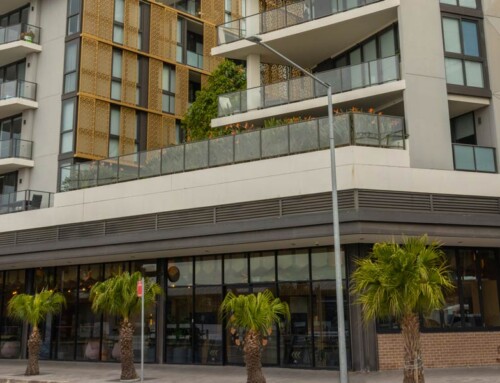Smart Warehouse Technologies

After more than 100 years, the simple pallet is about to become “smart,” joining a host of other amazing new smart technologies. Depending on the specifics of a warehouse, some smart technologies can help jansan distributors increase productivity and/or reduce mistakes.
However, most technologies are expensive and benefits are not guaranteed. After summarily describing some smart technologies, we will look at the steps to determine if a technology should be obtained.
A cornucopia of technologies
Powered by batteries, the low-cost smart pallet being developed by General Motors is designed to carry items from one section of a warehouse onto a truck and, once at the customer’s site, travel to wherever the items are needed. A press release lists a 200 lb. capacity and a speed of three miles per hour. Initially, a human will control the smart pallet, but a future version may be automatically controlled, like the automated guided vehicles (AGVs) described below.
Radio-frequency identification (RFID) refers to a computer chip that can be affixed to a carton, pallet-wrap, or a piece, and in which much data can be stored (e.g., date of manufacture). Special readers can read the data, even if a chip is not in the line of sight or is hidden by a carton. However, the cost per chip is still prohibitive, as is the cost of special data write/read devices.
The Internet of Things (IoT) refers to assigning a unique internet address (IP address) to a device that acquires and/or transmits data (e.g., a dedicated sensor) and/or controls something (e.g., the power to an automated conveyor belt). Internet-connected devices can be programmed and controlled via the internet and are just being adapted for warehouse use, resulting in the “connected warehouse.”
Automated guided vehicles (AGVs) are wheeled, powered, product-moving machines. Until recently, they were controlled by signals that special warehouse software transmitted to wires buried in a warehouse floor. Burying wires is an expensive process, and buried wires cannot be relocated as the product-mix, volumes, and storage arrangement change. Now, thanks to IoT and other technologies, wires are no longer needed, so remote-controlled forklifts are now termed “autonomous forklifts.”
One example of an automated storage and retrieval system (ASRS) is a set of bins that move like the steps of an escalator. Only the handrails are vertical, and the bins pivot on end-rods, always remaining horizontal. At the command of a worker, the enterprise resource planning (ERP) system transmits data to a power controller, which in turn rotates the bins so that the needed bin is at eye level (for picking or putting away). Another example looks like a multi-story carousel of bins, and at the command of a worker, it rotates the needed column of bins to face the worker (who reaches out, up, or down to get at the needed bin). Both types save floor space.
Product is usually loaded onto or taken from an ASRS by people. Still, newer versions of ASRS can be wirelessly connected to a single-arm robot so product can automatically be loaded onto or taken from the ASRS. This arrangement improves productivity because a robot arm does not have to wait for a bin or shelf to move to worker-reachable height. Even without ASRS, a single-arm robot can be attached to a vertical shaft that is attached to a post of a stationary shelving unit and move up, down, and over to pick products and place them in totes, cartons, or dollies. And then robots can put away products.
Mobile robots can slide under portable shelving units (filled with picked product) and move the shelving to sorting/staging/packing areas where people make the final decisions. Similarly, these robots can move received product to put-away locations. In an effort to advance the use of not-so-cheap robots, at least one manufacturer now offers to rent them.
Several companies are experimenting with using drones to move small, lightweight products from delivery trucks into customers’ job sites—the so-called “last mile” challenge. But drones are already being used by some companies in their warehouses and storage yards for cycle counting and other inventory monitoring activities. Some companies are experimenting with using drones to pick small, lightweight products and take the products to a sorting/staging/packing area. So far, a human, not software, controls each drone.
Image-based bar code readers allow reading a bar code no matter the direction in which a code is scanned. And these special readers can scan two-dimensional bar codes, which have been around for a while and contain much more information than traditional bar codes—but not as much as RFID chips.
Warehouse management system (WMS) refers to a distinct software package that is interconnected to the ERP system and is used to:
- Verify the validity of received items
- Determine where to put away received items that do not have permanent bin assignments
- Track the quantity on hand of each item in each bin
location - Alert users when pick areas need replenishing
- Generate pick tickets or data for radio frequency (RF) displays
- Verify the accuracy of picking, packing, and loading
- Generate truck manifests
- Suggest changing the arrangement of items with permanent bin assignments (as item velocities change)
- Track picker productivity
- Compare picker productivity to management-defined standards.
Voice-directed picking (VDP) refers to a system in which each user wears a device that they have “taught” to recognize his/her speech patterns. To each device is attached earphones and a microphone. The main ERP system transmits to the VDP server data about each order ready to pick, and the VDP server stores this data.
The VDP software determines which people are available at any time, and then transmits data to a specific user device. The device transforms the data into that user’s voice, telling him/her the location to go to, the SKU number involved, and the quantity. The user then does the picking and tells his/her device the SKU number involved and the quantity and task performed. The speech is transformed into data, which is transmitted by the VDP server back to the main system (for verification).
A similar sequence of steps is used for put-away. The system tells the user where to go and how much to put into the directed location. The user tells the system what item was put away, the slot location, and the quantity.
Is it likely to be worth the cost?
Although different technologies have different characteristics, the steps outlined below can be applied to determine the potential practicality and cost-justification of any of them.
- Sketch out a five-year plan addressing possible changes in products sold, types of customers served, and warehouse characteristics (e.g., square feet of storage space).
- List storage and transaction volumes of the warehouse (e.g., number of products stored, lines picked per day).
- List the costs of operating the warehouse and the factors behind each cost (e.g., number of warehouse workers and wages).
- List the current technology, including ERP software and computers.
- List the desired goal of the technology (e.g., for an AGV, an increase in productivity). Be as detailed as possible.
- Using the internet, identify the vendors of the technology being evaluated. Create an electronic list of the contact information for each.
- Using the information from step 6, request literature from each vendor.
- Using the literature obtained in step 7, define the information that a vendor will need to quote the costs of the technology in question. If necessary, go back and revise steps 2 through 5.
- Keeping the estimates from step 1 in mind, create a request for quotation (RFQ), the answers to which will be used to determine feasibility and justification. In the RFQ include desired goals, warehouse volumes (step 2) increased to reflect future conditions (step 1), description of current technology (step 4), and the warehouse costs (step 3). Ask for a quotation of costs for software, hardware, and services, both for the initial investment and recurring annual costs. Ask for an estimate of savings and other benefits (per steps 3 and 5) and for a list of possible challenges to achieving those savings and benefits. Email the RFQ to each vendor. Using the questions in the RFQ, create a spreadsheet for recording responses to the RFQ.
- As responses to the RFQ come in, use the spreadsheet to record them.
- After a few responses have come in, use the information in the spreadsheet to:
- Estimate initial investment and recurring costs
- Estimate recurring savings and benefits
- Judge the likelihood of success and the degree of challenges to implementation, and the degree, if any, of changes to the current hardware and software and warehouse characteristics—which would be additional costs.
So, are smart warehouse technologies right for you? In truth, smart technologies can work for anyone. You just need to determine what level of “smart” you need to benefit your business, now and in the future.

















